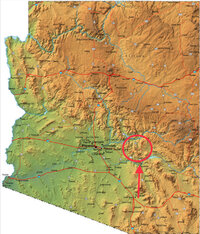Sure take 'r up, anyone can fly it....
View attachment 249461
The R-1 won the 1932 Thompson Trophy race, piloted by Jimmy Doolittle. He lapped all but one ship in the race, made easy turns and never had to come down and make a tight pylon turn. He also set a new F.A.I. world landplane speed record of 296 mph (476 km/h) in the Shell Speed Dash.
The distinction of a landplane record was noteworthy because, at that time, racing seaplanes outran landplanes, such as the then current speed record holder, a Supermarine S.6B which had averaged 407.5 mph (655.8 km/h) on September 1931.
The Springfield Union newspaper of September 6, 1932 quoted Doolittle as saying, "She is the sweetest ship I've ever flown. She is perfect in every respect and the motor is just as good as it was a week ago. It never missed a beat and has lots of stuff in it yet. I think this proves that the Granville brothers up in Springfield build the very best speed ships in America today."[4] Another Springfield paper of the same date quoted Doolittle as saying, "The ship performed admirably. She was so fast that there was no need of my taking sharp turns although if the competition had been stiffer I would have. I just hope Russell Boardman can take her out soon and bring her in for a new record. There were lots of things we might have adjusted more properly if we had had time to run tests with the ship, and they would have meant more speed. I am sure Russell Boardman can take her around at quite a bit more than 300 miles an hour so you see my record may not last long after all."
He also personally wrote Zantford "Grannie" Granville a letter dated September 7, 1932, on Shell Petroleum stationery and addressed to Granville Brothers Aircraft, which reads as follows:
Dear Grannie:
Just a note to tell you that the big G. B. functioned perfectly in both the Thompson Trophy and the Shell Speed Dash.
With sincere best wishes for your continued success, I am as ever.
Jim...
Privately, however, Doolittle was more concerned than he let on about the Super Sportster’s stability. “I could tell from the first moment that it was a touchy and probably unpredictable airplane. ... I didn’t trust this little monster. It was fast, but flying it was like balancing a pencil or an ice cream cone on the tip of your finger. You couldn’t let your hand off the stick for an instant, and I didn’t know how much angle of bank would be safe when making pylon turns.”
The R-1 rapidly acquired an reputation as a dangerous aircraft. This shortcoming was common to most racing machines of any kind. During the 1933 Bendix Trophy race, racing pilot Russell Boardman was killed, flying Number 11. During takeoff from a refueling stop in Indianapolis, Indiana, Boardman pulled up too soon, stalled the R-1 and crashed.[8]
The R-1 was repaired but with an 18 in (460 mm) fuselage extension, creating the "Long Tail Racer". The ship was painted with "I.F." on the cowl for intestinal fortitude and the same cartoon "Filaloola Bird" was painted on the side of the fuselage as it was on their successful Model YW. It was decided to save time by not to repairing the R-1 wings, but to use the original wings from the R-2, which had been removed in February 1933 when new wings with flaps were built and installed. The R-1/2, or "Longtail" aircraft carried race number 11 because the R-2's original wings were already painted as Number 11 and the repaired fuselage had to be painted regardless. This aircraft crashed in a landing overrun incident soon after it was built, but Roy Minor, the pilot, was not severely injured. The damage was not severe but there was no money left for repairs.
The unrepaired Long Tail Racer was sold to Cecil Allen before the sheriff's bankruptcy auction ended the Granville Brothers company. Allen renamed the ship "Spirit of Right", built an entirely new wing with a different airfoil and added a new rear fuel tank for the long distance Bendix race. Former Granville Bros. chief engineer "Pete" Miller wrote to Allen warning for him never to put fuel in the rear tank as it would move the center of gravity far to the rear and make the ship too tail heavy to be flown.
It is unlikely Allen ever attempted a fully fueled takeoff before the start of the race. In 1935 Allen started the 2,043 mi (3,288 km), Burbank to Cleveland Bendix Trophy race with all tanks full, wallowed off into the morning fog, crashed in a field just beyond the runway and was killed instantly. In spite of all the fuel, there was no fire. After this final crash, the aircraft was never rebuilt.
Photo-Description:
Aircraft: Gee Bee R-2
Reg: NR2101 photos
Serial #: GB-02
Airline: Private
Photo Date: Jan 01, 2012
Uploaded: Feb 14, 2012
Polk City Worlds Greatest Aircraft Collection - FA08, USA - Florida
PHOTOGRAPHER
by Angel Natal: Photos | Profile | Contact


